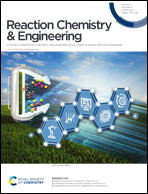Hydrogenation of carbon dioxide (CO2) to fuels in microreactors: a review of set-ups and value-added chemicals production
Abstract
Climate change, the greenhouse effect and fossil fuel extraction have gained a growing interest in research and industrial circles to provide alternative chemicals and fuel synthesis technologies. Carbon dioxide (CO2) hydrogenation to value-added chemicals using hydrogen (H2) from renewable power (solar, wind) offers a unique solution. From this aspect this review describes the various products, namely methane (C1), methanol, ethanol, dimethyl ether (DME) and hydrocarbons (HCs) originating via CO2 hydrogenation reaction. In addition, conventional reactor units for the CO2 hydrogenation process are explained, as well as different types of microreactors with key pathways to determine catalyst activity and selectivity of the value-added chemicals. Finally, limitations between conventional units and microreactors and future directions for CO2 hydrogenation are detailed and discussed. The benefits of such set-ups in providing platforms that could be utilized in the future for major scale-up and industrial operation are also emphasized.



 Please wait while we load your content...
Please wait while we load your content...